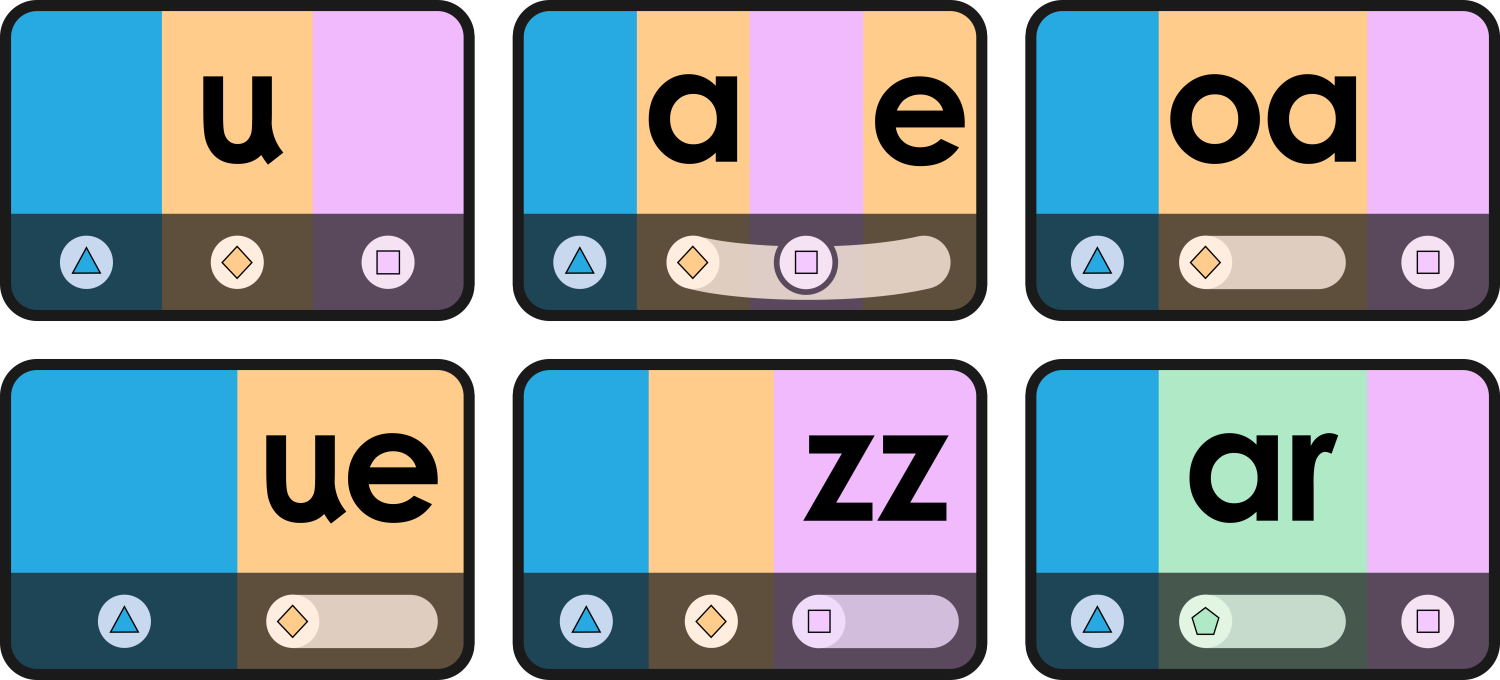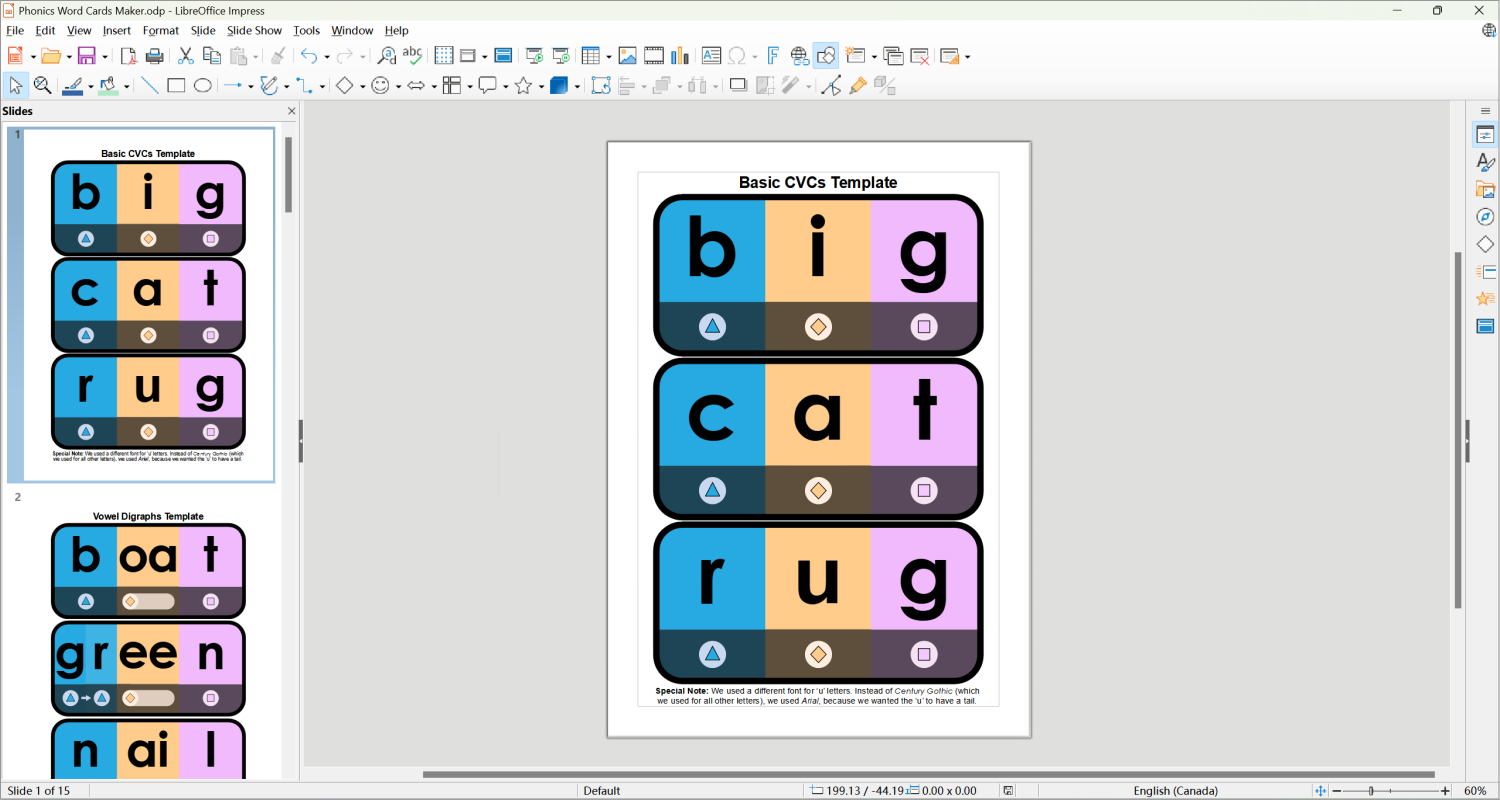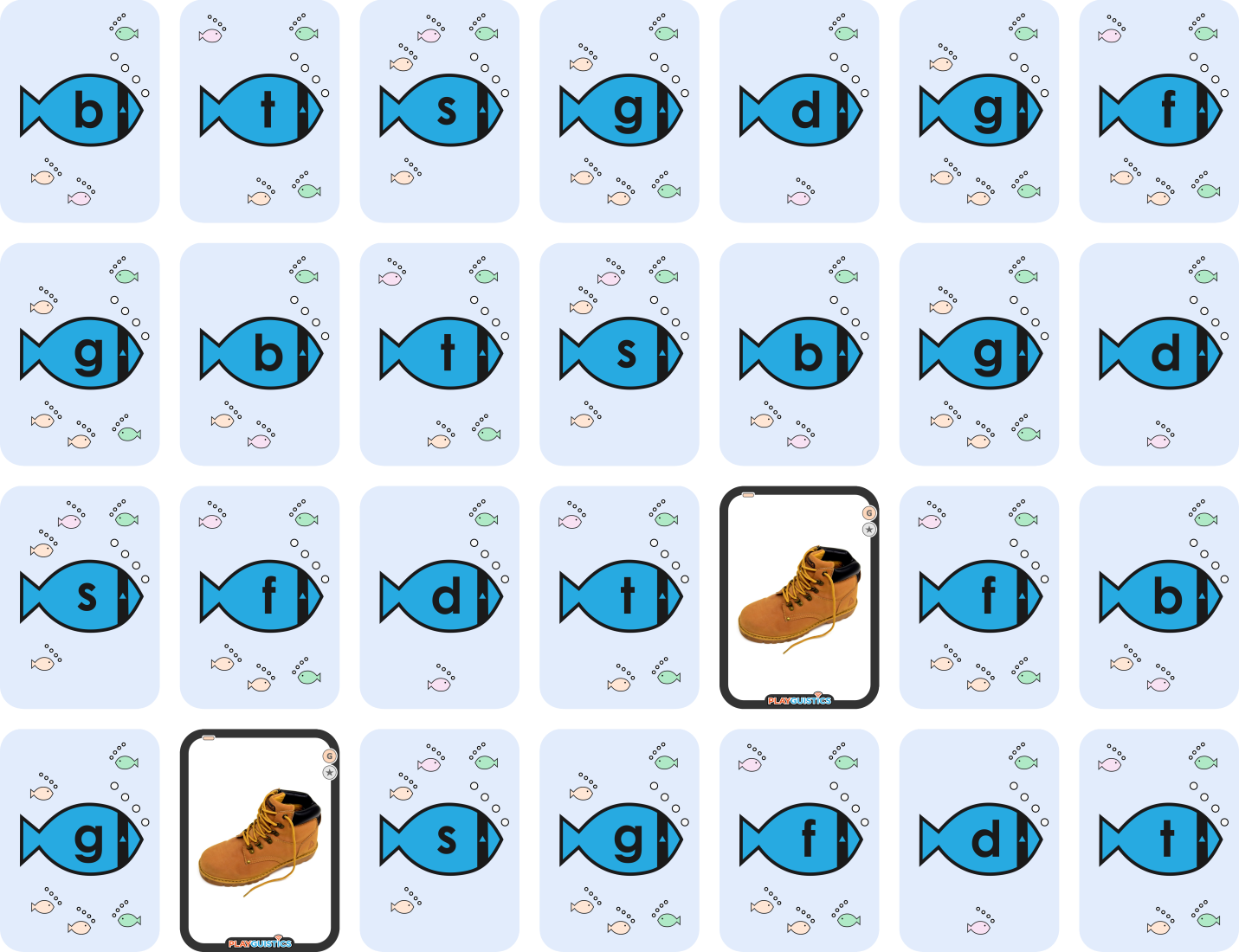Phonics & Reading Skills
|
Use our collection of double-sided Alphabet Teaching Cards to teach your students the names and sounds of each letter in the alphabet used by the English language. Each card has a letter on one side with the letter's sound on the opposite, which makes it easy to differentiate between asking student to pronounce the letters name versus its phonetic sound. Two double-sided versions are available for each letter, one with just the lowercase character (a) and one with both the uppercase and lowercase characters shown (Aa). Teachers can also choose between half-page cards and full-page cards.
|
|
|||
This series of cards makes teaching and learning English phonics rules intuitive to students. The color/symbol-coded system makes it easier for teachers to communicate about concepts such as the difference between consonants and vowels, and even that r-colored vowels are a special category of phonics sound. The Phonics Rule Cards also have a number of build-in visual aids designed to increase students comprehension in ESL learning environments. For example, many of the cards feature a "slide" visual, which makes it super easy for teachers to communicate that two or three letters work together to form a single phonics sound.
|
|
|||
Print out Phonics Word Cards for teaching and phonics decoding practice. Teachers can choose between printing a pre-made set of Phonics Word Cards and making their own from a provided template. These specialized word cards makes teaching and learning to read English words far more straightforward for students. The colorful cards are not only very engaging to look at (trust us, your student will want to have a closer look at them the first time you introduce them during a lesson), but also help students mentally breakdown and process the letter than make up words.
|
|
|||
Phonics Matching Tiles These printable tiles allow teachers to replace using boring worksheets with a gamified hands-on method of practice phonic encoding skills. The system consistents of Word Tiles and Sound Tiles. Teachers can use the tiles to demonstrate the skill of matching the right phonics sounds to specific words and students can then practice the application of the skill themselves. These tiles make gamifying learning easy. They're perfect for friendly races to see who can match the right sounds to the right words as fast as possible. However, they can also simply be used for non-competitive learning and even made available for independent practice during free-time in a kindergarten classroom. A variety of pre-made sets of Word Tiles are available, but teachers can also use the provided tile templates to create their own, which makes it easy for teachers to use the Phonics Matching Tiles with any phonics words they choose to.
|
|
|||
Phonics Fish Want to simultaneously provide your students with animal vocabulary recall practice, while developing their phonics skills? Phonics Fish is the classic card game Go Fish with a special phonics twist! The back of each card has a phonics clue that increase students' likelihood of guessing which of their fellow players has the card they need to form a set -- but only if they've paid attention during their phonics lessons. To play this game, participants take turns using the sentence pattern "Do you have a _________________?" to try to collect a full set of 3 matching cards that they can then lay down on in front of them to score points. This game offers many sets of cards for 11 different learning topics.
|
|
|||
Phonics Memory Known by many names, including Concentration, Matching Pairs, and Match Up, this game is an excellent way to familiarize new English learners with the different characters that make up the alphabet used by English. Phonics Memory is played with a set of cards in which there are two pairs of each type of card. Generally, the set would need to have at least 16 cards for the game to be interesting to play, but for most students, a set of 25-36 cards would ideal.
|
|
|||
Speaking Activities & Games
|
The Family Tree Builder learning system is primarily designed for family member vocabulary practice. However, some of the characters have names that allow pre-reading students to practice their decoding skills. The included character names that student will need to say to participate in the activity always rhyme, so students can practice sounding out words by simply pronouncing the first letter combinated with a consistent ending. For example, in the set of printable layers shown just below, the two characters are named "Tim" and "Lim." Students can practice differentiating between the t and l sounds while participating in this activity.
|
|
|||









